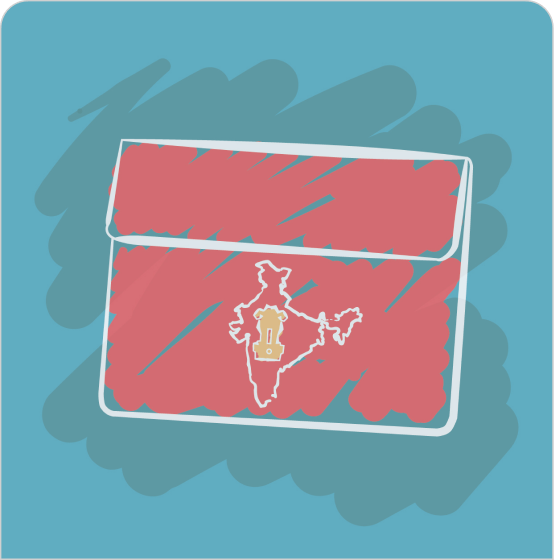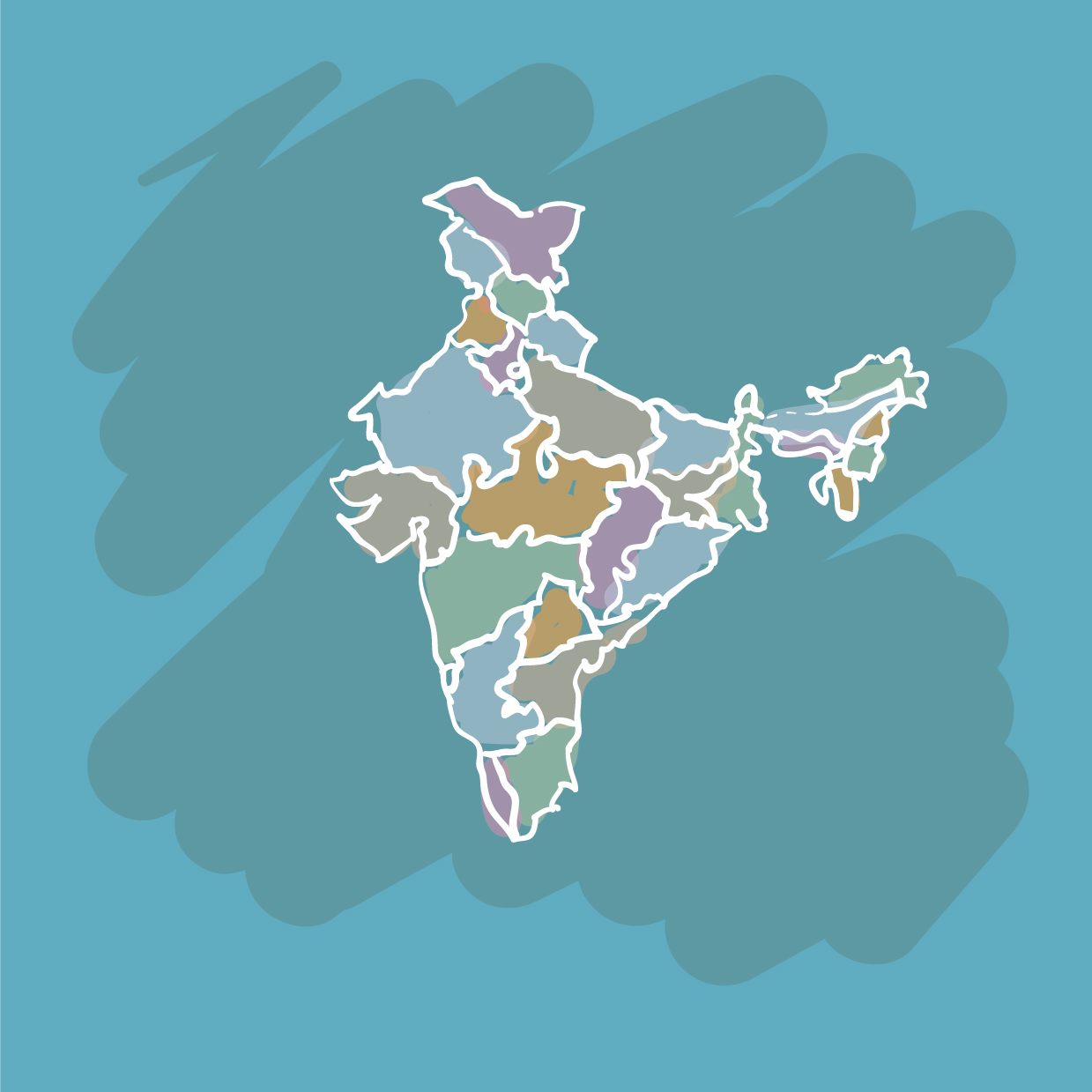Actuals
The amounts actually spent by the government in the previous financial year, which have been audited and certified by the office of CAG of India. This process of audit introduces the lag in data reporting.
Appropriation Account
It is prepared by the office of the Accountant General of the State, wherein discrepancies between the final grant and actual expenditure (if any) are reported and explained.
Appropriation Bill
The Appropriation Bill passed by the Legislative Assembly authorises the Government to withdraw money from the State Consolidated Fund to meet expenditure charged on the Consolidated Fund and provide for the grants approved by the Legislative Assembly.
Budget Controlling Officer
A Budget Controlling Officer is usually the Head of a Department (sometimes any other departmental officer). He/She has the responsibility of supervising and controlling expenditure and the collection of revenue.
Budget Estimates (BE)
Budget estimates are the amounts of expenditure ‘projected’ by the government for the ongoing or approaching financial year.
Capital Account
Capital Expenditure and Capital Receipts make up the budget on the Capital Account. Any expenditure incurred for the purpose of creation of assets or reduction of liabilities is recorded as Capital Expenditure.
Capital Receipts are those that lead to a reduction in the assets or an increase in the liabilities of the government. Examples include recoveries of loans, earnings from disinvestment and debt.
Capital expenditure
Any expenditure incurred in the creation of assets or reduction of liabilities is recorded as Capital Expenditure.
Capital receipts
Capital receipts are those receipts that lead to a reduction in the assets or an increase in the liabilities of the government. Examples include recoveries of loans, earnings from disinvestment and debt.
Cess
In India, a cess is applied on a specific commodity or service and is imposed as an additional tax on an already existing tax. The revenue raised from a cess is meant to meet certain specified objectives/expenditure. For instance, the Swachh Bharat cess is meant to be spent only on sanitation-related activities and not, say, on education.
Consolidated fund
The Consolidated Fund under Article 266(1) contains all the revenues received by the Government, all receipts from recoveries of loans given by the Government, and the entire amount of new loans raised by the Government. All the expenditure of the Government announced in the budget is incurred from this Consolidated Fund. And, the Government cannot withdraw any amount from it without authorisation from Parliament.
Contingency fund
The Contingency Fund was constituted under Article 267 of the Constitution of India and is a Rs 500 crore fund that is at the disposal of the President of India. It is for urgent or unforeseen expenditure that does not require prior legislative approval, unlike with the Consolidated Fund. However, the government must get such expenditure approved by Parliament later. Moreover, with the approval of Parliament, the Government needs to withdraw funds from the Consolidated Fund (equivalent to the amount of expenditure from the Contingency Fund) and replenish the Contingency Fund.
Corporation Tax
Corporation tax is levied on incomes of registered companies/corporations in the geographical territory of India (whether national or multinational/foreign). National companies are taxed on the basis of their aggregate income, irrespective of the source and origin, whereas foreign companies are taxed only on the income that arises from their operations in India.
Deficit
The margin by which the government’s expenditure exceeds its receipts over a year.
Direct tax
The tax imposed on a person or on property that cannot be transferred, is called a direct tax.
Disinvestment
The sale or liquidation of assets by the government, usually Central and State Public Sector Enterprises, projects, or other fixed assets is called disinvestment.
Drawing and Disbursing Officer (DDO)
A Drawing and Disbursing Officer is a subordinate officer appointed by the Budget Controlling Officer to administer and control budgetary allocations. DDOs are responsible for the execution of schemes as they are authorised to draw money from the Treasury for disbursal.
Equalisation levy
Introduced in India in 2016, the aim of this levy is to bring digital transactions under the tax net. It is levied on the income accruing to foreign e-commerce companies operating in India. The equalization levy is a direct tax and is aimed at taxing business-to-business transactions. Colloquially, it is known as the Google Tax.
Expenditure Budget
The Expenditure budget gives information on how much the government intends to spend, and on what, in the next fiscal year.
Fiscal deficit
Fiscal Deficit refers to the gap in a government’s budget that arises when the government’s total expenditure in a financial year exceeds its total receipts that year. Consequently, it borrows money to cover that gap. The additional resources raised by the government in a financial year to meet this gap amount to the fiscal deficit for that year.
Fiscal Responsibility and Budget Management (FRBM) Act, 2003
The FRBM Act, when first passed, required the Central Government to reduce its fiscal deficit to 3 per cent of GDP. The initial deadline to achieve this target was 2007-08, but it has been extended multiple times over the years.
The Finance Act, 2018, extended the deadline to achieve this target from 2017-18 to 2020-21. It also removed the provision that required the Central Government to limit its revenue deficit to 2 per cent of GDP.
Google Tax
The equalisation levy is popularly known as the Google Tax. The term was coined as the levy is targeted at digital companies, and Google is synonymous with digital services.
Grants-in-aid
Grants-in-Aid are provided by a higher tier of Government to a lower tier. In this case, they are provided by the Union Government to the States. They are different from loans since they are provided without the expectation of any repayment.
GST compensation cess
GST compensation cess is levied in addition to regular GST on certain goods such as tobacco and related products, coal, aerated beverages, luxury cars, etc. The revenue generated from these cesses is to be used to finance compensation to States in case there is a shortfall in their GST collection.
Gross State Domestic Product (GSDP)
GSDP refers to the monetary value of all goods and services produced within the boundaries of a State during a given period.
Guillotine
Typically, the Lok Sabha decides to hold a detailed discussion on four or five Demands for Grants. The ministries identified for discussion vary every year and are decided by the Business Advisory Committee of the House. This discussion is followed by voting. Demands that have not been discussed and voted on by the last day are ‘guillotined’, i.e., they are voted upon together.
Income Tax
Income tax is a tax on the income of individuals, firms, etc. other than companies, under the Income Tax Act, 1961.
Indirect tax
A tax imposed on a transaction, that can be transferred, is called an indirect tax.
Integrated Financial Management System (IFMS)
IFMS is a budgeting and accounting system through which the budget, expenditure, payment, etc. of the Government can be managed.
Local Bodies Grant
A Local Bodies Grant is determined by Article 275(1) of the Constitution and consists of grants to both urban and rural local bodies.
Motor Vehicles Tax
Motor vehicles tax is a tax levied on every motor vehicle by a State under its Motor Vehicles Taxation Act. The Union Government has the power to increase or decrease the rate of tax from time to time.
Non-tax revenue
Sources of revenue that are outside the purview of levies on wealth, income or property are classified as non-tax revenue. States that are rich in natural resources tend to raise revenues from non-tax sources such as mining of minerals and metals. Other key sources are Interest Receipts, Dividends and Profits from State Public Sector Enterprises, as well as returns from user charges on general, social and economic services.
Post-Devolution Revenue Deficit Grant
A Post devolution revenue deficit grant covers the gap between a State’s revenue and expenditure. It is a mechanism provided by the Finance Commission for compensation (from the Centre) for any loss incurred by States.
Public accounts
The Public Account was constituted under Article 266(1) of the Constitution. Certain transactions, other than the normal receipts and expenditure of Government, enter Government accounts. The Government acts more as a banker in the case of these transactions, through provident funds, small savings collections, other deposits, etc. The money received and the related disbursements are made from the Public Account. Funds kept in the Public Account do not belong to the Government, and it needs to repay this money eventually to the persons and authorities who deposited them. Therefore, Parliamentary authorisation is not required for payments from the Public Account.
Public Debt
Public debt is the total of all the liabilities of the Central Government contracted against the Consolidated Fund of India.
Revenue Account
The Revenue Account consists of Revenue Expenditure and Revenue Receipts. Any expenditure that does not create assets or reduce liabilities is treated as Revenue Expenditure. Examples include salaries, subsidies, interest payments, etc.
Proceeds from taxes, non-tax sources of revenue and other receipts are recorded as Revenue Receipts. Income tax, corporation tax, Union excise duty, etc. are some of the sources of tax revenue, while interest receipts, fees/user charges, and dividend or profits from government enterprises are examples of non-tax revenue.
Receipts Budget
A Receipts Budget details how much revenue the government intends to raise in the next fiscal year to meet its expenditure, and from where.
Revenue deficit
Revenue deficit is the amount by which revenue expenditure exceeds revenue receipts. Any expenditure/receipt that does not create assets or reduce liabilities is treated as a Revenue expenditure/receipt.
Revised Estimates (RE)
Revised estimates or ‘revised projections’, are reported in the forthcoming year’s budget and are a revision of the budget estimates announced in the budget of the previous year.
Revenue expenditure
Any expenditure that does not create assets or reduce liabilities is treated as Revenue Expenditure. Examples include salaries, subsidies, interest payments, etc.
Revenue receipts
Revenue received from tax and non-tax sources of revenue is recorded as Revenue Receipts. Income tax, corporation tax and Union excise duty are some of the sources of tax revenue, while interest receipts, fees/user charges, and dividend or profits from government enterprises are examples of non-tax revenue.
Sales Tax
Sales tax is generally charged at the point of purchase or exchange of certain taxable goods. It is charged as a percentage of the total value of the product. In India, Sales Tax used to be levied under the authority of both Central Legislation (Central Sales Tax) and State Governments’ laws (Sales Tax) before the introduction of VAT.
Service Tax
Service tax is levied on services provided by an entity such as a bank or a hotel. The responsibility for payment of this tax lies with the service provider. The Goods and Service Taxes (GST) includes both Excise Duties and Service Taxes.
Stamp and Registration Duty
Duty charged on the sale or transfer of property is referred to as Stamp Duty and is a major source of tax revenue for most States.
State Development Loans (SDLs)
SDLs are dated securities issued by States to meet their borrowing requirements from the market.
State Excise Duty
Unlike Union Excise Duty or CENVAT, State Excise Duty is charged on alcohol and related products, narcotics, etc.
Supplementary Budget
Budgets are made before the start of the financial year, and the revenue and expenditure numbers in the budget are projection by the government.
Many a time, however, things turn out different than what was estimated in the budget. Like revenue can be higher, or there could be a need for some additional spending. In such cases, government can bring a smaller budget during the ongoing financial year. Such budgets are called ‘Supplementary budget’.
Compare to full budgets, these are smaller in scale, and generally more focused in select areas.
Surcharge
A surcharge is an additional charge levied on a tax, but unlike a cess, revenue from a surcharge can be spent on any purpose.
Tax
A tax is a compulsory transfer from eligible taxpayers to the Government, to enable it to provide public services.
Tax-GDP ratio
Tax-GDP ratio shows tax revenue as a percentage of the income of the country and allows for an inter-country comparison of the means at the disposal of a country to provide public services.
Tax revenue
All money collected through various taxes imposed on individuals or organisations, whether direct or indirect, is called tax revenue.
Union Excise Duty
Union Excise Duty is a production tax imposed by the Union Government on goods manufactured in India for domestic consumption, under the Central Excise Act, 1944 and the Central Excise Tariff Act. From 1999 onwards, it has been called the Central Value Added Tax (CENVAT). Certain goods, such as alcohol and its related products, as well as narcotic substances, come under the purview of State Excise Duty and are collected by all States.
Value Added Tax (VAT)
VAT, is a multistage tax levied only on the ‘value added’ at each stage in a supply chain and not on the entire value of sale. Under the VAT system, taxpayers receive credit for tax already paid on the inputs in earlier stages of the supply chain.
The Goods and Services Tax (GST) is a version of VAT.
Voted and Charged Expenditure
Expenditure that has to be authorised by a legislature/Parliament is Voted Expenditure while any spending that is automatically debited from the Consolidated Fund of India is called Charged Expenditure. Examples of charged expenditure include expenditure on all constitutional offices, interest payments, and salaries of the President, Lok Sabha speaker, etc. Parliament can discuss these matters but cannot vote on them.









